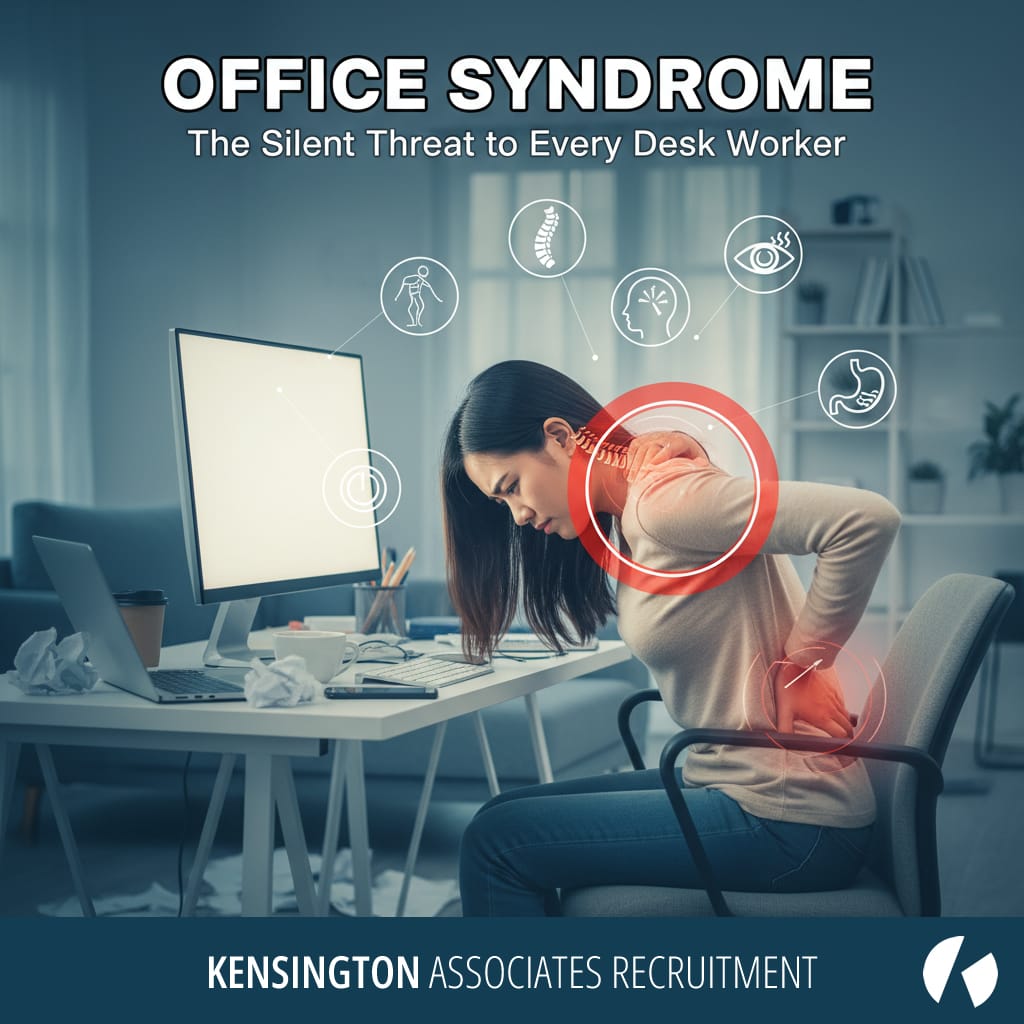Are you an office worker? Do you spend hours glued to your screen, often feeling that nagging shoulder pain, back pain, or a stiff upper neck? If you're someone who clocks long hours sitting and frequently experiences muscle aches, pay close attention.
These common discomforts might be more than just minor fatigue—they could be a warning sign of Office Syndrome.
If left unchecked, these symptoms can worsen and significantly impact your daily life and work ability!
Understand the Popular Disease: What is Office Syndrome?
Office Syndrome is a prevalent condition that goes beyond simple muscle pain. It’s caused by working in the same posture for a prolonged period, which leads to a cascade of physical problems.

This imbalance results in issues with:
- Muscles: Leading to chronic aches and stiffness.
- Joints, Ligaments, and Nerves: Causing pain and potential mobility issues.
- Various Body Systems: Negatively affecting blood and lymphatic circulation, digestion, and even vision.
It is most commonly found in office workers who continuously maintain improper postures for extended periods.
Are You Experiencing These Symptoms?
The symptoms of Office Syndrome are diverse and can manifest across several parts of the body.
| Category | Common Symptoms |
| Musculoskeletal Pain | Neck pain, shoulder pain, back pain, arm pain, wrist pain, palm pain, finger pain, or trigger finger. |
| Other Physical Issues | Eye socket pain, blurred vision, high blood pressure, indigestion, bloating, and difficulty sleeping or interrupted sleep. |
What Stage Are Your Symptoms In?
It's crucial to understand the severity of your condition. Office Syndrome progresses through distinct stages:
1. Initial Stage (The Warning)
- Starts with muscle soreness or stiffness that appears during or right after work.
- Key Feature: Symptoms typically improve with stretching, changing posture, or resting, but they tend to come and go.
- Be cautious: If ignored, the pain can become harder to relieve and transition to a chronic problem.
2. Chronic Stage (The Frequent Pain)
- Symptoms persist for a while without improvement, happen frequently, and do not improve with simple posture changes.
- Key Feature: The pain starts to interfere with daily life or reduces your work ability.
- Action: This stage requires urgent professional assessment and treatment.
3. Severe Stage (The Critical Point)
- Involves almost constant pain, along with more alarming symptoms like numbness, weakness, muscle stiffness, blurred vision, dizziness, migraines, and sometimes nausea.
- Key Feature: These symptoms significantly affect daily life and may prevent you from working normally.
- Action: Urgent medical consultation is essential.
GET YOUR ONLINE CV CLICK HERE
Steps to Conquer and Treat Office Syndrome
The good news is that you have control over your recovery and prevention!
For the Initial Stage (Self-Care is Key)
Focus on addressing the root cause and promoting healing:
- Adjust your lifestyle and work posture according to ergonomic principles.
- Self-Massage and use hot and cold compresses.
- Regularly stretch your muscles and joints to improve blood and lymph circulation.
- Incorporate exercises to increase flexibility and strength.
For the Chronic and Severe Stages (Seek Professional Help)
If your pain is severe, slow to heal, and frequently recurs, you need expert intervention. Without proper treatment, it can lead to reduced flexibility and structural imbalance.
- Consult a doctor for a proper diagnosis (which may involve X-rays or MRI scans).
- Explore options like physical therapy, topical/oral medications for pain, acupuncture, or specialized devices to distribute weight.
- For Severe Symptoms (especially with numbness/weakness), doctors may consider injections or, in rare cases, surgery to correct the underlying cause.
WE CAN UPGRADE YOUR CV CLICK HERE
Prevention is the Best Cure!
Ultimately, Office Syndrome is the result of habitual unhealthy behaviors and environments. The most effective long-term treatment is self-care and prevention.
- Ergonomics: Correct and adjust your posture and equipment (chair, desk, monitor) according to ergonomic principles.
- Move More: Take frequent breaks to stretch during prolonged work.
- Stay Healthy: Exercise regularly and eat foods that improve muscle, tendon, and joint flexibility.
- Manage Stress: Utilize techniques for stress relaxation to reduce overall physical tension.